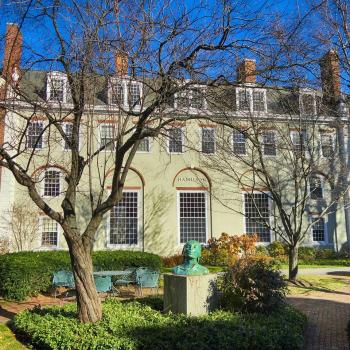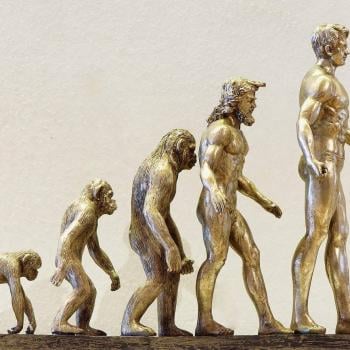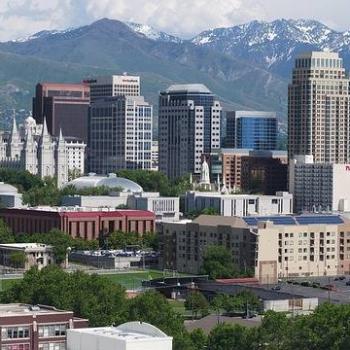
THE RELIGION GUY’S ANSWER:
We don’t know when Christianity first reached the British Isles, but as early as A.D. 314, local bishops traveled to southern France for the first church council held after the Roman Empire halted persecution of the expanding faith. The succeeding 16½ centuries brought tumultuous schism and civil war in Britain, but also remarkably creative churchmanship in theology and education, pastoral work and missions, worship and devotion, nation-building and charitable outreach, the arts and music.
That rich heritage has seemed at risk with decades of gradual but unremitting church decline, lately worsened by the COVID crisis. But a major new survey from the Bible Society says British Christianity’s much-pondered slide has been ended by a “dramatic” growth spurt. The topline finding: Those attending church monthly or more often went from 3.7 million in 2018 to 5.8 million by last year, a 56% increase. Admittedly, this is a nowhere-to-go-but-up situation in a nation of 68 million people. Churchgoing Christians are put at 12% of the population, a big jump from the 8% in 2018.
Such numbers, understandably, are disputed. On July 15, Humanists UK, an organization for non-religious Britons, demanded that the Bible Society “admit to the problems in its research and retract what it said.” In response, the organization defended its research methodology while admitting the numbers “may be on the upper end of a range that future data sets will nuance.”
Beyond “Believability”
The church-friendly David Voas of University College London is skeptical, writing that the Bible Society report “runs counter to everyday experience – and years of data.” An August 7 article by Stephen Bullivant at the Catholic St. Mary’s University says some growth could be occurring. Indeed, Premier Christianity magazine posts upbeat examples of church renewal at www.premierchristianity.com/features/renewal/, and the popular “Alpha” program to educate inquirers in Christian belief is thriving. But Bullivant insists the Bible Society amplifies any gains “well beyond the bounds of believability.”
The Bible Society commissioned the survey of adults in England and Wales (thus covering 90% of the British population but excluding Northern Ireland and Scotland) by YouGov, a reputable international polling firm. The first round in 2018 was followed by a 2024 rerun to track the six-year trends. The sample populations were huge, 19,101 and then 13,146, resulting in a reported margin of error of only 1%. The results are reported in “The Quiet Revival,” written by two Bible Society researchers whose expertise is endorsed by Bullivant. See text via www.biblesociety.org.uk/research/quiet-revival/.
The findings on younger Britons are particularly interesting. Those between ages 18 and 24 scored higher than average as monthly attenders, at 16%. And though women tend to outnumber men at church over the years, among men aged 18-24 a notable 21% said they’re monthly attenders versus 12% of women. Also of interest: among those under age 55, 32% of the churchgoing population came from non-white minorities, compared with 18% of the over-all national population.
Anglicans Overshadowed
There’s a significant breakdown by denominations. In the 2018 survey, Anglicans (the “established” Church of England and separate Church in Wales) made up 41% of the regular churchgoers, but that dropped to 34% in 2024. In the same years, Catholics moved up from 23% to 31%, and Pentecostals from 4% to 10%. Looking at younger adults aged 18 to 34, only 20% of the regular attenders are now Anglicans, compared with 41% Catholics and 18% Pentecostals.
Those who question the data note statistics from the churches themselves. The Church of England reported last year that regular worshippers have fallen to just over 1 million (those baptized as infants form a vastly larger but only nominal membership). Average Sunday attendance for adults plus children was 895,000 in 2009, 716,000 in 2019 before COVID hit, and a mere 574,000 by 2023. There’s comparable slippage in Anglican baptisms, Sunday School enrollment, confirmations, marriages, and Christmas and Easter attendance. The Catholic Church officially reported weekly Mass attendance of 702,000 in 2019, falling to 555,000 in 2023.
According to social scientists’ British Social Attitudes survey, regular churchgoers declined from 12.2% of the population in 2018 to 9.3% in 2023. And political scientists’ British Election Study (BES) — conducted by the same YouGov organization –says the churchgoing public in England and Wales declined from 8% of the population in 2015 to 6.6% in 2024. Various theories have been offered for what seem by comparison to be inflated Bible Society numbers.
Some Sampling Issues
Voas proposes that the key factor is BES use of a strictly random sample selected from the national population. The Bible Society project worked from a large but self-selected YouGov panel which was then weighted by demographic factors like age and sex. Voas thinks such “quota samples” on a “non-probability” basis are inferior and “do not give each person in the population a known chance of being selected” so that “findings cannot be reliably generalized.”
British churches’ ups and downs occur in the context of their historic struggles over sexual morality. By Vatican edict in 2023, Catholic priests who wish are now allowed to conduct informal blessings for gay, lesbian, and unwed heterosexual couples but must make clear these are not marriages. By a decision made that same year, the Church of England authorizes formal “Prayers of Love and Faith” ceremonies for same-sex couples, though marriage remains defined as heterosexual. Pentecostal and independent evangelical congregations maintain a strict traditionalist line against same-sex behavior.
British Christianity gave birth to the global Anglican Communion with its 47 national branches, traditionally led by England’s Archbishop of Canterbury. But unity has been disrupted since 2004 when the U.S. branch, the Episcopal Church, consecrated Anglicanism’s first openly gay bishop. The latest controversy erupted July 30 with election of an openly partnered lesbian, Cherry Vann, as the new archbishop who leads the Church in Wales.
Immediate protests came from two organizations of traditionalists in Africa and elsewhere overseas, who vastly outnumber Britain’s Anglicans. The Global South Fellowship of Anglican Churches stated that faithful Christians must “restore the Scriptures to their central place” and “will grieve that the tear in the fabric of our beloved Communion is now established at the highest level.” GAFCON (the Global Anglican Futures Conference) declared that believers must stand against the “Anglican revisionists who blatantly impose their immorality upon Christ’s precious church.”











